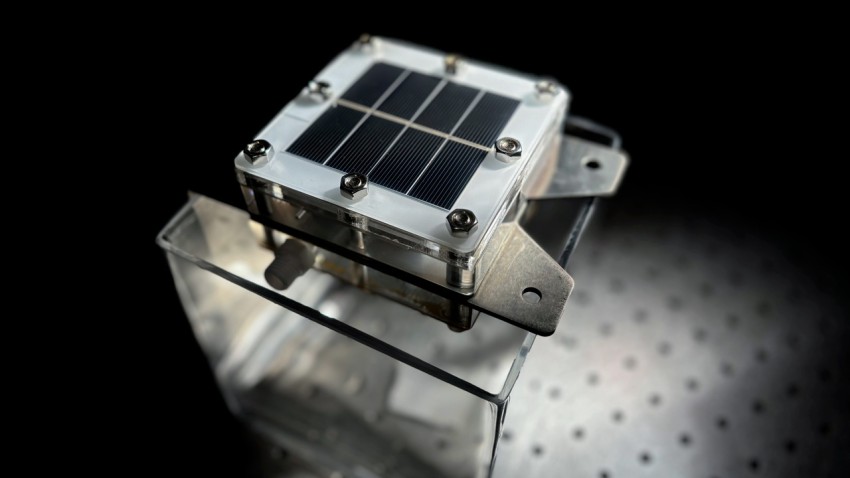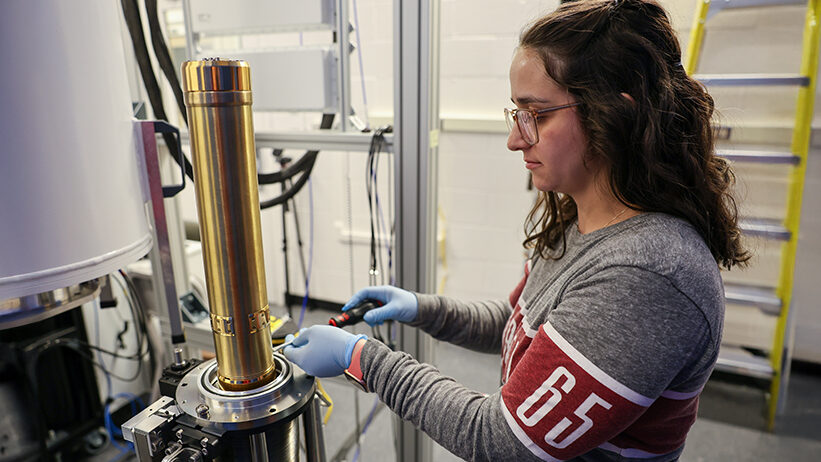News
-
![]()
3D-printed superconductor achieves record performance
Nearly a decade after they first demonstrated that soft materials could guide the formation of superconductors, Cornell researchers have achieved a one-step, 3D printing method that produces superconductors with record properties.
-
![]()
Biodegradable ‘heat bombs’ safely target specific cells
Cornell researchers developed a new way to safely heat up specific areas inside the body by using biodegradable polymers that contain tiny water pockets, a technology that could lead to precise and noninvasive diagnostics and therapeutics.
-
![A Cornell-led team built a 10 centimeter by 10 centimeter prototype device that produces carbon-free “green” hydrogen via solar-powered electrolysis of seawater, with an important byproduct: potable water.]()
Sunlight and seawater lead to low-cost green hydrogen, clean water
Researchers developed a low-cost method to produce carbon-free “green” hydrogen via solar-powered electrolysis of seawater, with a helpful byproduct: potable water.
Latest Awards and Recognition
View all-
Bezos grant fuels Bitar AI project
A Cornell research project, led by Eilyan Bitar, associate professor of electrical and computer engineering, exploring…
October 31, 2025
-
NIH MERIT award goes to De Vlaminck
Iwijn De Vlaminck, associate professor, has received a MERIT award from the National Institutes…
October 20, 2025
-
Wang named Corrsin Award recipient
Z. Jane Wang, professor, was recognized as the recipient of the American Physical Society’s…
October 20, 2025
-
Hare receives Stix Award
Jack Hare, assistant professor, has received the American Physical Society’s 2025 Thomas H. Stix…
October 20, 2025






